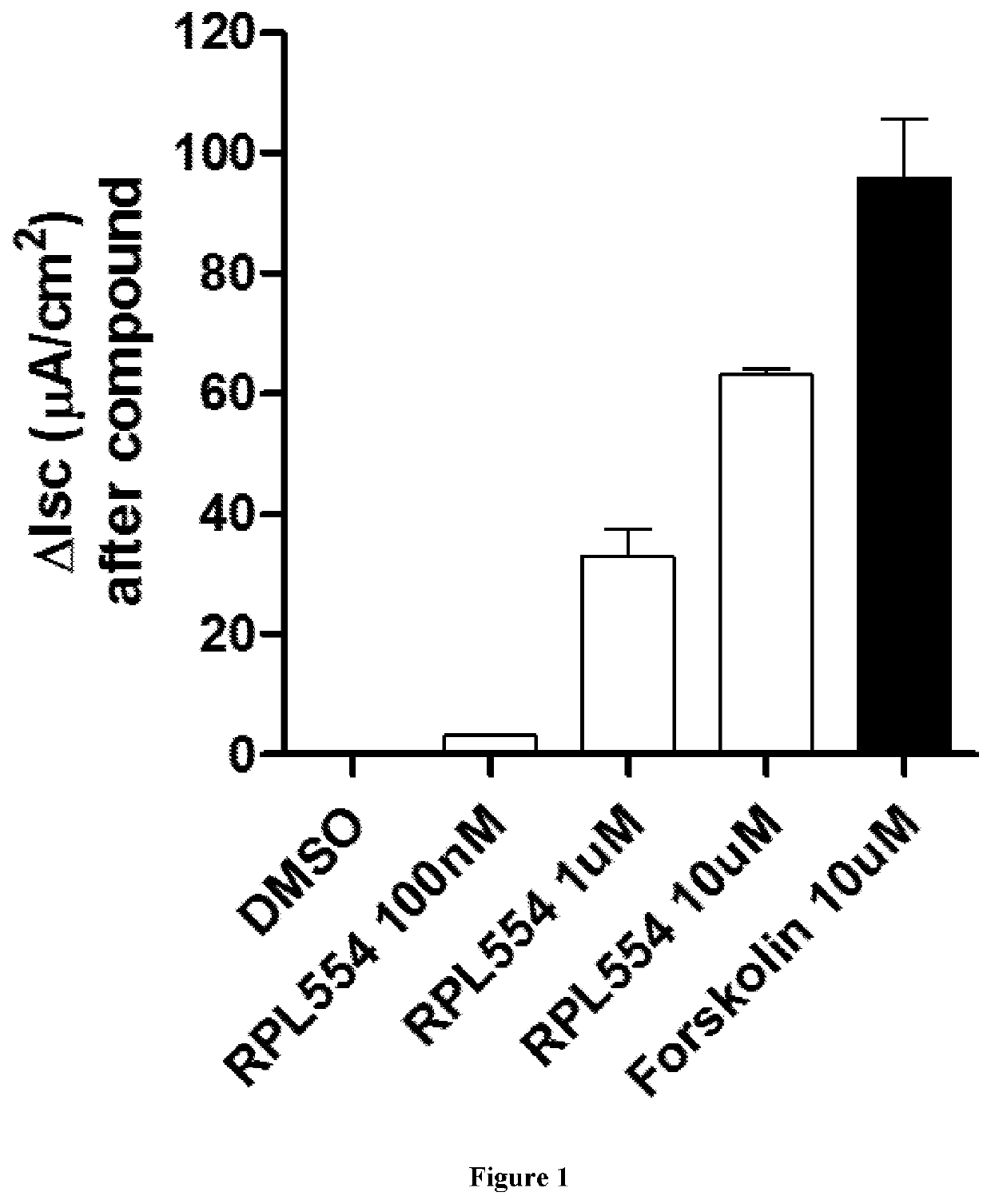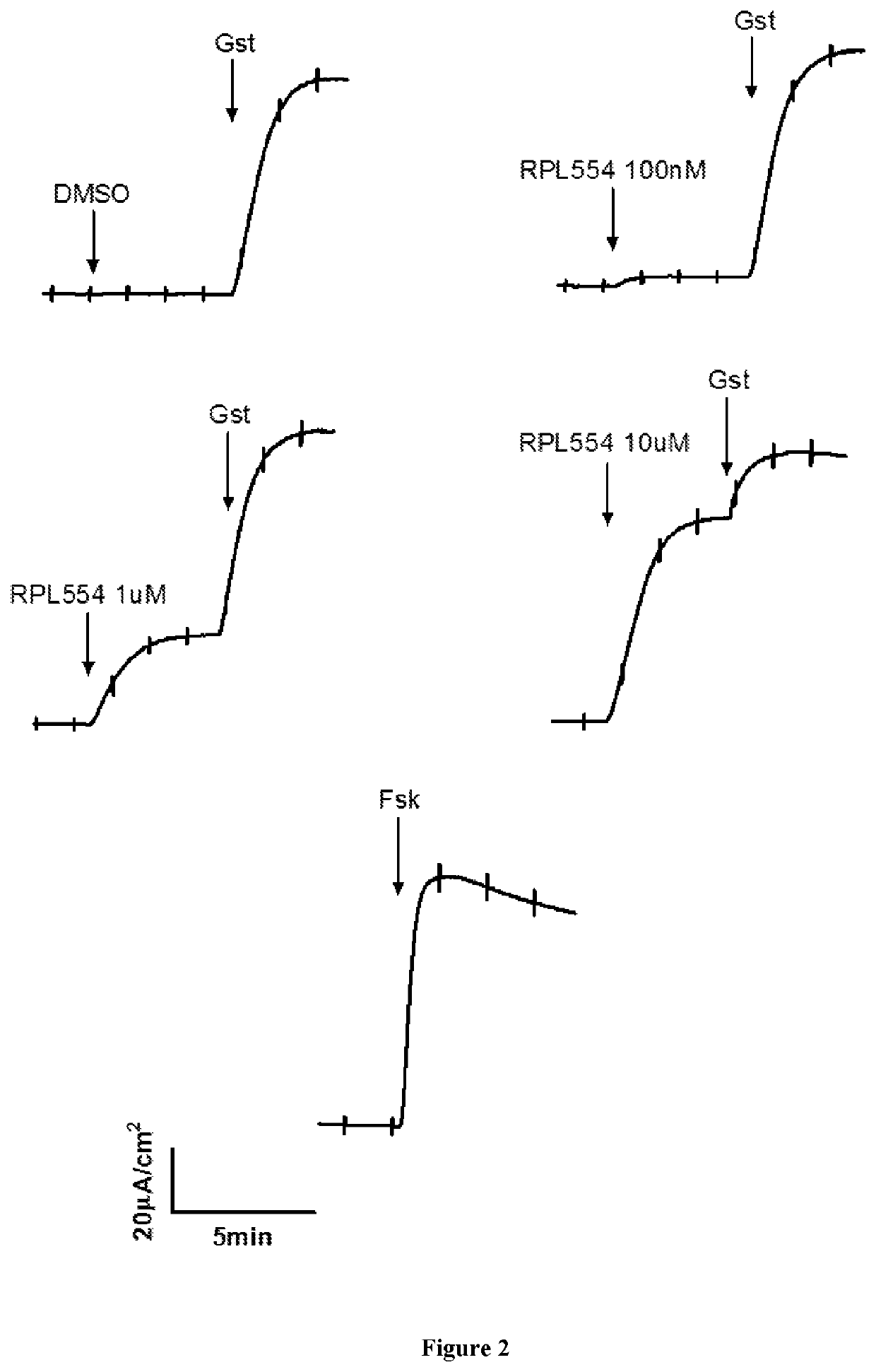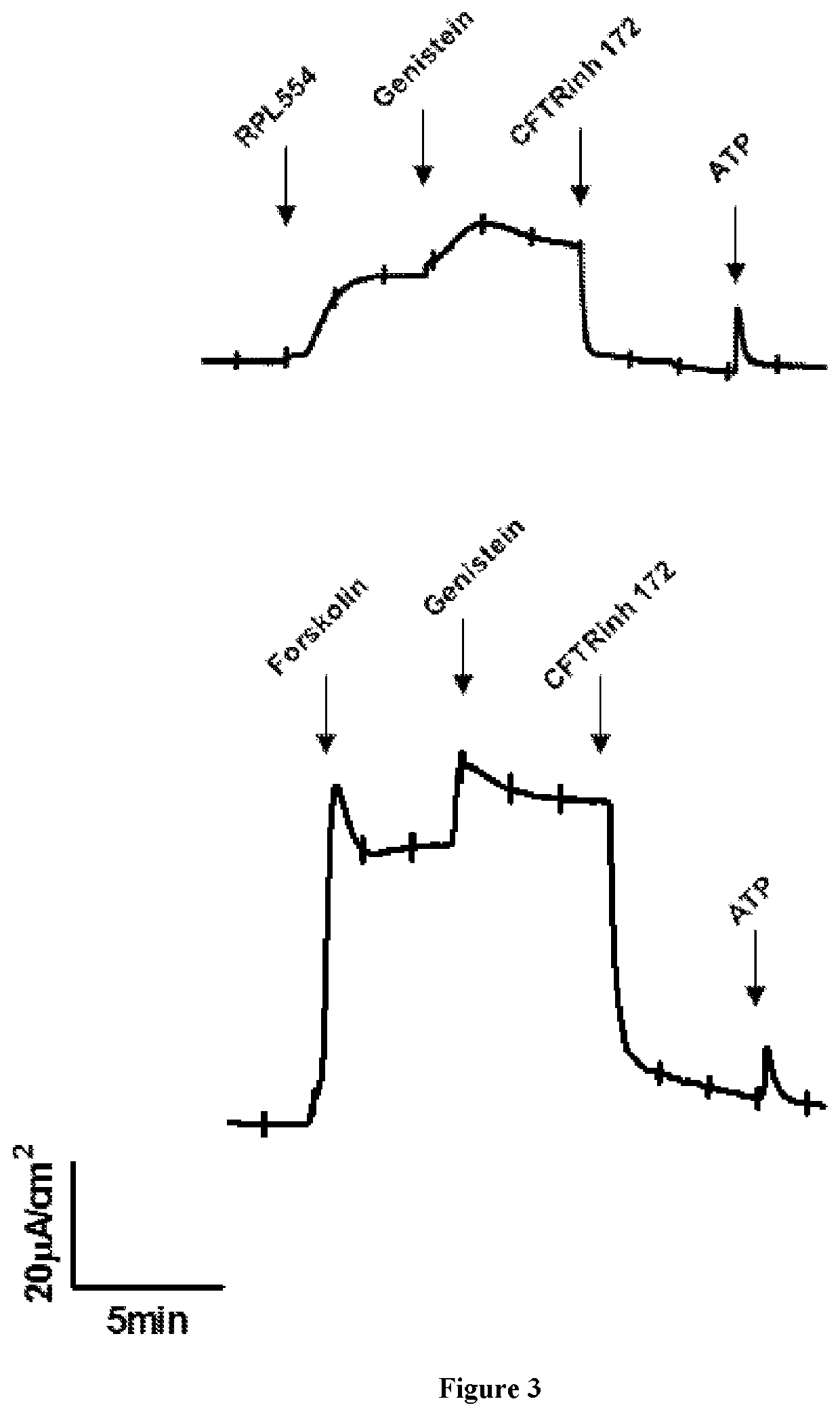Treatment
a technology of cftr and active ingredients, applied in the field of disorders, can solve the problem that rpl554 does not have a side effect, and achieve the effect of modulating cftr activity
- Summary
- Abstract
- Description
- Claims
- Application Information
AI Technical Summary
Benefits of technology
Problems solved by technology
Method used
Image
Examples
example 1
ctivator Activity on WT CFTR in CFBE Monolayers
[0103]RPL554 was added acutely at three different concentrations (0.1, 1.0, 10 μM) to cystic fibrosis bronchial epithelial (CFBE) monolayers expressing WT CFTR. DMSO dimethylsulfoxide) was used as a negative control. Genistein (50 μM) and forskolin (10 μM) were used as positive controls. The results are shown in FIGS. 1 and 2 which demonstrate that RPL554 alone can activate WT CFTR channels in CFBE monolayers.
example 2
ctivator Activity on WT CFTR in Primary HBE Cells
[0104]After pretreatment with 100 nM amiloride to inhibit ENaC currents, RPL554 or forskolin (10 μM; apical) was added, followed sequentially by genistein (50 μM; apical), CFTRinh-172 and ATP (100 μM). The results are shown in FIG. 3 which demonstrate that RPL554 alone can activate WT CFTR channels in highly differentiated primary HBE monolayers.
example 3
sted as an Enhancer of WT CFTR in CHO Cells Using the Whole Cell Patch Clamp Technique
[0105]A forskolin (Fsk) concentration giving a submaximal response was determined. Forskolin-stimulated currents were measured at concentrations between 100 nM and 50 μM and fitted to determine the EC50 (FIG. 4). It was then confirmed that the current was due to CFTR.
[0106]To determine if the current induced by 2 μM forskolin was indeed carried by CFTR channels, the sensitivity of the current at +40 mV to the CFTR inhibitor CFTRinh-172 (Inh 172) was examined (FIG. 5).
[0107]RPL554's ability to enhance the response of WT CFTR to 2 μM forskolin in whole cell patches was then assessed. To examine the effect of RPL554 on CFTR activity during submaximal stimulation, CHO cells were stimulated with 2 μM forskolin then exposed acutely to RPL554. The concentration dependence of RPL554 as an enhancer of CFTR is shown in FIG. 6.
[0108]The timecourse of CFTR activation by RPL554 and inhibition by Inh 172 (curren...
PUM
| Property | Measurement | Unit |
|---|---|---|
| mass median diameter | aaaaa | aaaaa |
| particle size | aaaaa | aaaaa |
| particle size | aaaaa | aaaaa |
Abstract
Description
Claims
Application Information
 Login to View More
Login to View More - R&D
- Intellectual Property
- Life Sciences
- Materials
- Tech Scout
- Unparalleled Data Quality
- Higher Quality Content
- 60% Fewer Hallucinations
Browse by: Latest US Patents, China's latest patents, Technical Efficacy Thesaurus, Application Domain, Technology Topic, Popular Technical Reports.
© 2025 PatSnap. All rights reserved.Legal|Privacy policy|Modern Slavery Act Transparency Statement|Sitemap|About US| Contact US: help@patsnap.com



